Installation of a surface pump for a cottage: rules for connection and operation
To choose the best pump option for water intake, the owners of summer cottages have to take into account many factors. Agree, I do not want to be in a situation when, after purchasing expensive equipment, it turns out that its performance is not enough.
We will help to resolve this issue. We will tell you by what criteria we select surface pumps for summer cottages. Here you will learn how to connect the pump unit, what equipment will be needed if you decide to automate the pumping of water from a well or a well.
The article presented for familiarization describes in detail the design features of surface pumps and the specifics of operation. The material is accompanied by thematic photos and videos that will help to do everything right.
The content of the article:
Features of the operation of surface pumps
Surface pumps, as the name implies, are mounted on the surface. These are relatively inexpensive and quite reliable devices, although they are not suitable for very deep wells.
Rarely find surface pumpwhich can supply water from a depth of more than 10 meters. And this is only in the presence of an ejector, without it, the indicators are even lower.
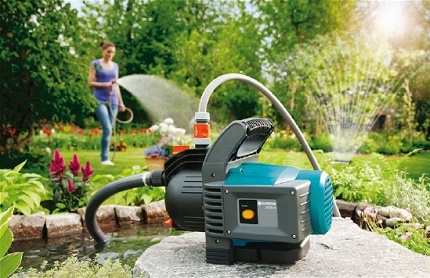
If the cottage has a well or a well of suitable depth, you can safely choose a surface pump for the site.
You can take a model with relatively low productivity for irrigation or a more powerful device that will effectively provide water to a private house. The convenience of surface pumps is obvious: first of all, it is easy access for adjustment, maintenance and repair.
In addition, the installation of such a pump at first glance looks very simple. Install the pump in a suitable place, lower the hose into water, and then connect the device to power. If the pump is needed only for irrigation, you can purchase and deliver it without any additional elements.
To optimize the operation of the device, it is recommended to take care of the automated control device. Such systems can turn off the pump in case of a dangerous situation, for example, if water does not enter it.
“Dry running” not recommended for almost all surface pump models. You can also automate the shutdown of the pump if the watering time has expired, the required volume is filled, etc.
How is the pumping station arranged?
To organize an autonomous water supply of a house from a well or wells should purchase additional elements and combine them into a complete pumping station. In addition to the pump, you will need a hydraulic tank, as well as a pressure switch. This relay switches the pump on and off, depending on whether the hydraulic tank is empty or full.
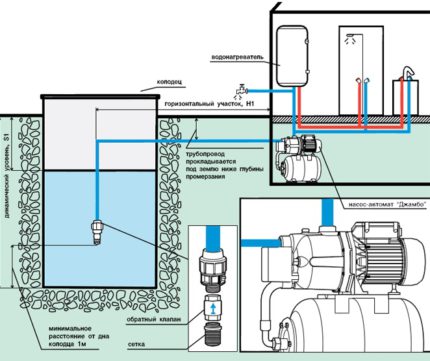
As a result, a certain amount of water will always be available in the house, and the pump’s idle operation is completely eliminated. This significantly extends the resource of his work. Besides, the presence of a hydraulic tank compensates for possible water hammer, which positively affects the condition of the water supply system as a whole.
It is also recommended that you purchase a manometer (if the tank is not equipped with it). Of course, you can purchase a pumping station equipped with all the necessary components. The installation order of the industrial production station and assembled independently do not differ too much.
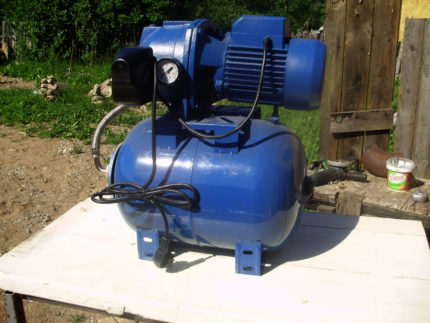
The hydraulic accumulator or hydraulic tank is a container equipped with a special rubber membrane. As the tank fills, this membrane stretches, and when empty, it contracts. Such a device is considered highly effective for autonomous water supply.
Tank system
As an alternative to a hydraulic accumulator, you can consider a conventional tank, for example, made of plastic. It can be any suitable container that will provide the family with water needs. Typically, such a storage tank is installed as high as possible to provide a sufficient pressure of water in the water supply system of the house.
It should be borne in mind that the load on the walls and floors will increase. For calculations, one should remember not only the weight of the accumulated liquid (the weight of water in a 200 liter tank will, of course, be 200 kg).
Take into account the weight of the tank itself. Gross weight is related to the bearing capacity of the house. If in this regard doubts arise, it is better to seek the advice of an experienced engineer.
To automate the operation of the pump with a home-made storage tank, a float sensor can be used. This is a relatively simple device, many craftsmen make it themselves. A float is installed in the tank, with the help of which water level information is sent to the automatic switch.
When the amount of water in the tank reaches the minimum level, the pump turns on and runs until the tank is full. After that, the pump automatically shuts off. A storage tank is considered an economical option for home water supply, since the cost of such a complex of devices is lower than that of an industrial production pumping station.
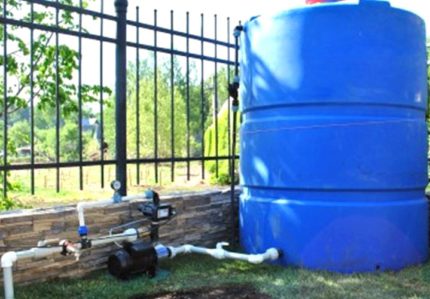
Where is better to install the pump?
The most important point when installing a surface pump or pump station is choosing the right place.
Here are a few requirements that will help you find the right place for your pumping equipment:
- the closer the device is to the water source, the more stable its intake will be;
- the device (or set of devices) should be protected from the weather in a special room, head, bunker, etc.
- it is necessary to protect the pump from freezing during winter cold;
- the place where the equipment is installed must be ventilated to avoid the increased level of humidity causing corrosive processes;
- Sufficient space should be taken care not only to accommodate the pump or the entire station, but also to carry out the necessary maintenance, tuning, repair, etc .;
- the place must be either far from the living quarters, or additionally isolated from noise, as the surface pumping equipment works quite loudly.
It is not always possible to observe all these conditions, but this should be done with all our might. The surface pump is usually installed as close to the water source as possible.
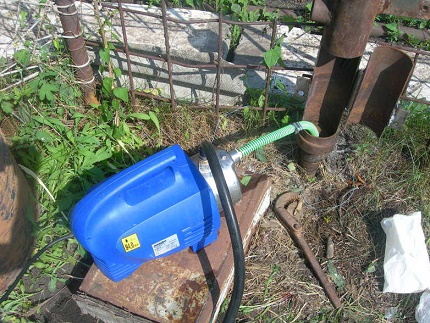
To protect the device from external factors, it can be placed in places such as:
- special wooden box;
- comfortable wellhead;
- cavity excavated in the ground;
- inside a spacious well;
- boiler room located next to a water source, etc.
Of course, each site is individual, a decision must be made depending on the situation.The pump is deepened into the ground if it is necessary to protect the device from frost, but there are no other options. You will have to dig a fairly spacious and deep hole, it should be below the level of freezing of the soil.
Of course, if the cottage is used only in the warm season, the requirements for installing the pump may not be so severe. The freezing problem automatically disappears.
But the pump should still be securely hidden from rain. When preserving a summer cottage for the winter period, of course, the surface pump must be removed, cleaned and stored in suitable conditions.
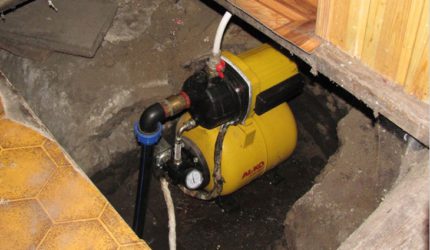
If the water source is a well made of concrete rings that are large enough in diameter, you can place the pump directly in it. In this case, you don’t need to dig anything, you will need a small sturdy raft that can support the weight of the pump. The raft is lowered directly onto the surface of the water mirror, the pump is fixed on top of it.
The advantage of this solution is that the immersion depth of the hose will be slightly increased, i.e. the fence will be made from a greater depth. But you should take into account possible problems.
For maintenance and repair of equipment it will have to be removed to the surface. The risk of electrical contact with water increases. But in general, this option is quite acceptable.
If you need to install a surface pump as part of a pumping station, the requirements for choosing a suitable location will be approximately the same. Although it should be remembered that the dimensions of the whole complex of devices are slightly larger than that of a conventional pump. Most often, a station is installed in a well-equipped near the mouth caisson wells.
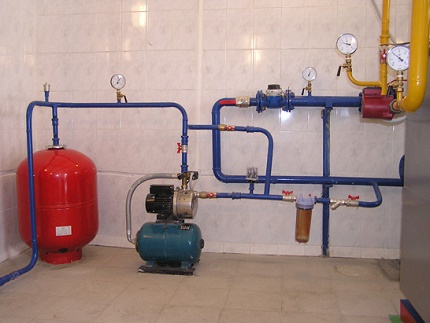
An ideal place is a boiler room, already landscaped for the operation of heating equipment. Pumping stations are also installed in the basement of an apartment building, but such a room will have to be carefully prepared: to insulate and provide heating in order to prevent freezing of water, etc.
You can put the station inside the well, but this will cause an additional problem. To adjust pressure switch equipment will have to be removed to the surface. The figures that are obtained when the pump is running on the surface can change when it is lowered down. This makes adjusting the pressure switch difficult.
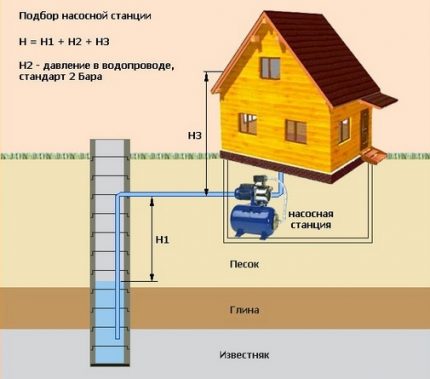
For lack of better, surface pumps are sometimes installed directly in residential premises: in the hallway, pantry, bathroom, etc. So the equipment will not get wet and will not freeze, but the noise from its work will definitely interfere with the residents of the house.
This option can only be considered temporary, at the earliest opportunity a pump or station should be installed in a more suitable place.
Choosing a place for the surface pump should be even before its purchase. When installing such equipment, the “1: 4” rule should be followed. This should be the ratio of the depth with which water is drawn to the horizontal distance to the pump.
If water comes from a depth of two meters, then the horizontal section to the equipment should be no more than eight meters. If this ratio is not observed, for example, the distance to the pump is greater, it is recommended to take the pipes a quarter of an inch wider than the manufacturer's recommended sizes.
Pump Connection Procedure
Although it is believed that with the installation of surface pumps less trouble than with the installation submersible modelsStill, do not take this matter lightly. A number of important points taken into account when installing the pump will help increase its efficiency and prevent possible breakdowns.
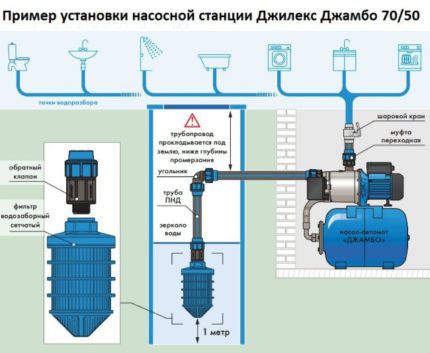
Step 1. Preparation of materials and tools
To connect surface pump, for starters, stock up on appropriate materials.
Here is a sample list of required items:
- a connecting fitting that is installed between the pump and the hose;
- hose for water intake from the source;
- hose or pipes for connecting the pump to the storage tank;
- watering hose;
- check valve with strainer;
- special adapter for the second output;
- connecting fittings;
- fasteners, etc.
If you are installing a system with a hydraulic accumulator, you will also need a pressure switch and a pressure gauge. If you decide to use only the storage tank, you should purchase or make a float sensor.
Various keys may be needed from the tool, as well as attachments for working with fasteners. Roulette, building level, materials for insulating threaded joints, soldering iron for polypropylene water pipes, etc. will come in handy.
Step # 2. Installation of the device on the basis of
Before you connect any elements to the pump, you need to install it on a solid and level base. This is an important point.
Even a small instability or roll can cause a significant decrease in the performance of the device. The base can be made of concrete, brick or even solid wood.
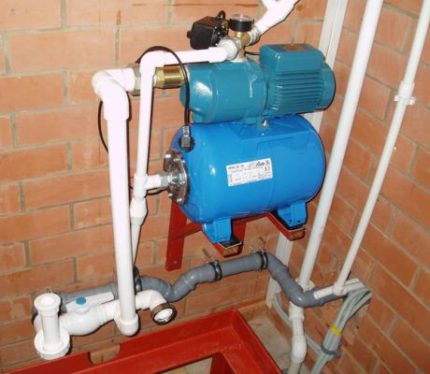
The main thing is that it is durable and even. Anchor bolts are usually used to secure the pump in a stable position.
There are special holes for the fasteners in the device body. Sometimes a large rubber gasket is mounted under the pump body. It plays the role of a shock absorber and dampens vibration during engine operation.
Step # 3.Installation of the supply hose
Then install the feed hose. Attach to its bottom check valveput on the strainer. As a fastener, a sleeve with an external threaded connection is used.
Pumps equipped with a non-return valve and a coarse filter are manufactured at industrial enterprises. In order not to mess with this part of the installation of the system, you can buy such a ready-made hose.
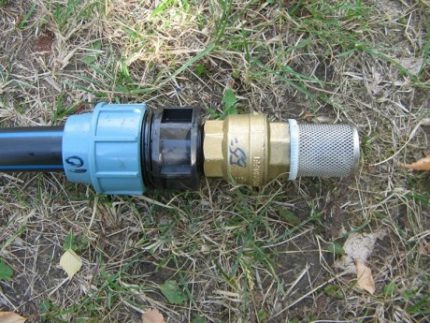
But, according to the reviews of experienced masters, independent production of a hose with a valve will cost much cheaper. If the installation technology of all elements is observed, such a device will be no less reliable than a model of industrial production. Sometimes two check valves are mounted: one at the end of the hose, the other next to the accumulator.
The upper part of the hose is connected to the pump using a fitting. Instead of a hose, a polypropylene water pipe with a diameter of 32 mm can be used. After that, the hose is immersed in water so that the check valve is immersed in it by at least 30 cm.
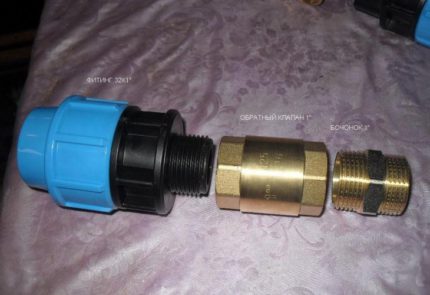
The non-return valve, as well as the filter protecting it, are necessary elements. The valve protects the pump from idle, because it prevents water from pouring back after the pump is turned off. A filter is necessary to protect the device from contamination.
Step # 4. Connection to the water supply system
Then connect the pump to the accumulator or storage tank. It should be remembered that the horizontal part of the hose should have a slight slope. Often, a flexible supply to the tank and an adapter, as well as other elements of the system, are mounted on threaded connections. In this case, care must be taken to ensure proper sealing using FUM tape or other suitable seals.
After that, the storage tank or station is connected to home water system. When laying pipes, you should also remember the correct slope. An important point is the insulation of pipes laid in the ground. Today there is a wide selection of suitable heaters, it remains only to choose and use the suitable one.
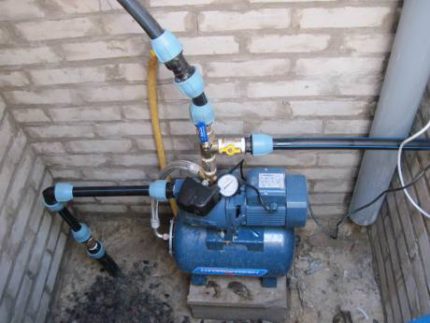
Only after all the devices are assembled into a common trunk and connected to the inside of the house water supply, it is possible to test the operation of the system.
Improper start-up of the surface pump can cause it to break quickly. The details of this process are outlined in the manufacturer's instructions, which should be carefully studied.
Step # 5. System Check
Typically, surface pumps are filled with water through a hole before starting. Water should fill not only the pump, but also parts of the line before and after the pump. Then the filler hole should be closed. It is recommended to immediately record the pressure readings in the accumulator and in the system.
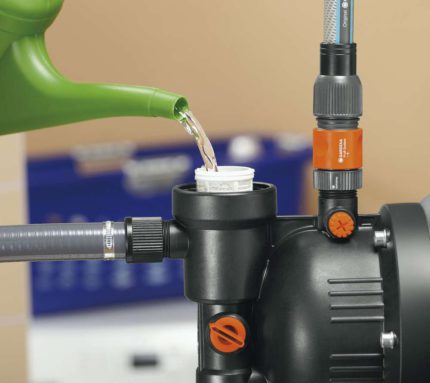
This information may come in handy when further configuring the system. Perhaps you need to pump a little air into the hydraulic tank or bleed it.
After that, the pump is connected to the mains and turned on so that the storage tank or accumulator is filled with water. Immediately check all connections for leaks and repair if necessary.
If you use a home-made tank, it does not hurt to check its integrity.Water can leak through previously unnoticed cracks. This problem should also be resolved immediately. If the system is assembled correctly, and nothing flows anywhere, it remains only to configure the control equipment.
After that, you need to check the operation of automatic systems. To do this, open the water and observe the process. When the drive is empty, the pump should turn on automatically and turn off again when the tank is full to the set level.
Typically, the pump will automatically shut off when the pressure in the system approaches three atmospheres. After that, the water is drained until the pump starts working again.
At this point, you should fix the real system pressure and compare it with the manufacturer’s recommendations. If significant differences are found, it is necessary to adjust the operation of all devices to an acceptable level. After setting up, the test is repeated.
Conclusions and useful video on the topic
Details on how to properly connect a surface pump as part of a pumping station are outlined in the following video:
Here, the procedure for connecting a surface pump for irrigation is clearly presented:
There are not many pitfalls in installing a surface pump. Of course, you should not rely on your own instinct or the famous “maybe”.
A careful study of the manufacturer's instructions, as well as a few small consultations with experienced craftsmen will help even a novice to cope with this task quite satisfactorily.
Do you want to tell how you use a surface pump in a country house or did you arrange a water supply system at its base? Any rationalization suggestions or tricky questions? Please write comments in the block below.

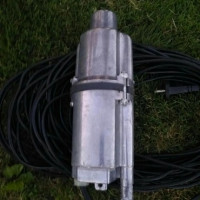 Overview of the water pump "Trickle": device, rules for connection and operation
Overview of the water pump "Trickle": device, rules for connection and operation 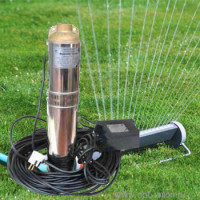 Overview of the borehole pump “Aquarius”: device, characteristics, rules of connection and operation
Overview of the borehole pump “Aquarius”: device, characteristics, rules of connection and operation 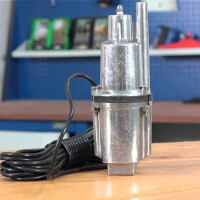 Overview of the Rodnichok water pump: device, characteristics, operating rules
Overview of the Rodnichok water pump: device, characteristics, operating rules 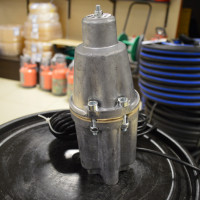 Overview of the submersible pump “Kid”: unit diagram, characteristics, operating rules
Overview of the submersible pump “Kid”: unit diagram, characteristics, operating rules 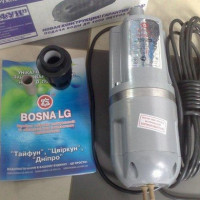 Water pumps "Typhoon": an overview of the model range, device and operating rules
Water pumps "Typhoon": an overview of the model range, device and operating rules  Overview of the water pump "Vometomet": device, types, decoding of markings and specifics of operation
Overview of the water pump "Vometomet": device, types, decoding of markings and specifics of operation  How much does it cost to connect gas to a private house: the price of organizing gas supply
How much does it cost to connect gas to a private house: the price of organizing gas supply  The best washing machines with dryer: model rating and customer tips
The best washing machines with dryer: model rating and customer tips  What is the color temperature of light and the nuances of choosing the temperature of the lamps to suit your needs
What is the color temperature of light and the nuances of choosing the temperature of the lamps to suit your needs  Replacement of a geyser in an apartment: replacement paperwork + basic norms and requirements
Replacement of a geyser in an apartment: replacement paperwork + basic norms and requirements
I have a special pit dug for a pump (a small cellar, a pit). The pump is there all year round. In winter, you have to additionally insulate it. For this I use an old cotton blanket. But there are no problems with the fact that I forgot to hide the equipment when the rain started abruptly, and other similar situations. The noise from this pit is heard, but it is less than if the pump worked somewhere on the surface. It’s dry in the cellar, I’m also following this.
At my cottage in the well is Marina CAM 88 / PA-HL. Nice pump, easy to use and reliable. In the spring you put it on the pipe, fill it with water to the edge. And he works all season and does not complain. No swap is needed. In the autumn, you dry it and clean it somewhere in a dry room. Made of stainless steel pump. It gives a pressure of about 4.5 atmospheres, pumps 60 liters / minute. Before that, there was a domestic Agidel pump, there were more problems with it.